Semi Solid State Battery vs Lifepo4 Battery: What's the Difference?
The energy storage landscape is constantly evolving, with new technologies emerging to address the growing demand for higher energy density, improved safety, and longer lifespans.Two prominent technologies have gained significant attention in recent years: semi-solid state batteries and LiFePO4 (Lithium Iron Phosphate) batteries. This article delves into their respective characteristics, advantages, limitations, and potential applications.
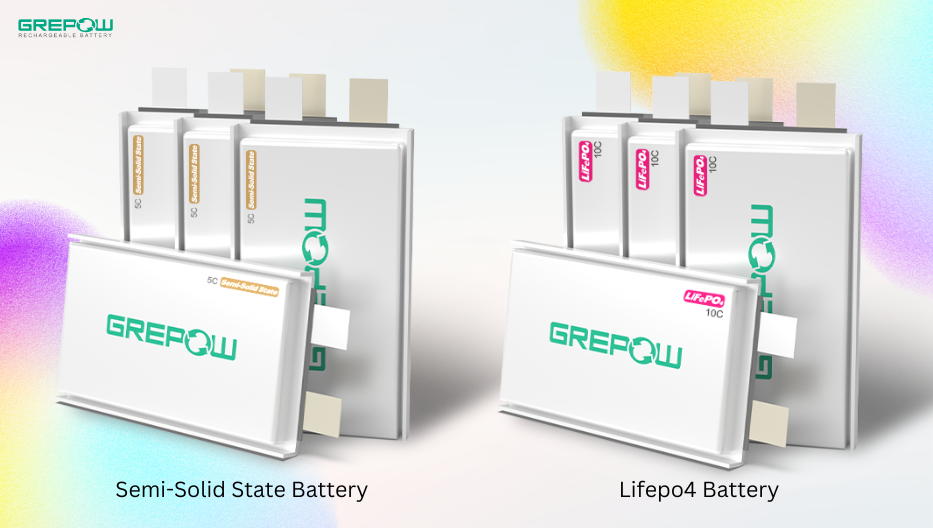
What Are Semi-Solid State Batteries?
Semi-solid state batteries represent a bridge between traditional liquid-electrolyte lithium-ion batteries and fully solid-state batteries that combines features of traditional liquid electrolyte batteries and solid-state batteries. They utilize a unique electrolyte that possesses properties of both liquids and solids. This electrolyte can be a gel, a polymer-based material, or a liquid containing solid particles. This semi-solid medium enhances the battery's energy density and safety by reducing risks such as leakage and thermal runaway.
What Are LiFePO4 Batteries?
LiFePO4 batteries are a mature and widely adopted lithium-ion battery technology known for their stability, safety, and durability. They use lithium iron phosphate as the cathode material and are commonly found in applications demanding reliability and safety. These batteries have gained popularity due to their long cycle life, high power density, and environmental friendliness—free from toxic heavy metals like cobalt4. They perform well across a wide temperature range, making them suitable for various applications including renewable energy storage and electric vehicles.
Semi-Solid State Battery vs Lifepo4 Batteries: What's the Difference?
Feature | Semi-Solid State Batteries | LiFePO4 Batteries |
| Electrolyte | Semi-solid (gel, polymer, or liquid with solid particles) | Liquid |
| Energy Density | Up to 350 Wh/kg | 90-160 Wh/kg |
| Safety | High (reduced thermal runaway risk) | Very High (chemically stable and non-flammable) |
| Lifecycle | Longer (reduced degradation) | Long (thousands of cycles) |
| Cost | High (advanced materials) | Low (economical materials and processes) |
| Commercial | AvailabilityLimited (emerging technology) | Widely available |
| Temperature Performance | Better in high temperatures | Sensitive to extreme cold |
| Scalability | Challenging (current R&D stage) | Mature and highly scalable |
| Applications | EVs, drones, high-performance devices | Renewable energy, EVs, backup power |
| Charging Speed | Potentially Faster | Moderate |
Advantages and Disadvantages of Semi Solid State Batteries
Advantages:
●Higher Energy Density: These batteries can store more energy in a smaller volume compared to traditional lithium-ion batteries.
●Improved Safety: Reduced risk of thermal runaway compared to traditional lithium-ion batteries.
●Potential for Faster Charging: Improved ion transport may lead to shorter charging times.
●Enhanced Lifecycle: Longer cycle life due to reduced electrolyte degradation.
●Flexible Design: Allows for innovative cell architectures and lightweight applications.
Disadvantages:
●Cost: High production costs due to advanced materials and manufacturing processes.
●Development Stage: Still under research and development; commercial availability may be limited compared to established technologies.
Advantages and Disadvantages of LiFePO4 Batteries
Advantages:
●High Safety: Non-flammable and resistant to overheating, making them suitable for critical applications.
●Long Lifecycle: Capable of thousands of charge-discharge cycles without significant capacity loss.
●Cost-Effectiveness: Economical for both production and end users.
●Environmental Friendliness: Free from toxic materials like cobalt; compliant with environmental regulations.
Advantages:
●Lower Energy Density: Not suitable for applications requiring compact and lightweight energy storage.
●Temperature Sensitivity: Performance can degrade in extreme cold.
Use Case Recommendations
When to Choose Semi-Solid State Batteries:
●High Energy Density Requirements: Applications like drones, aerospace, and EVs where weight and space are critical.
●Safety Priority: Environments demanding enhanced safety, such as urban mobility and consumer electronics.
●Cutting-Edge Performance: Industries seeking state-of-the-art energy solutions.
When to Choose LiFePO4 Batteries:
●Cost-Sensitive Projects: Renewable energy storage and budget-conscious EVs.
●Durability Requirements: Industrial and commercial vehicles with high usage cycles.
●Safety-Critical Applications: Medical devices and backup power systems.
Future Trends and Outlook
Semi-Solid State Batteries:
As research progresses, production costs are expected to decrease, paving the way for broader adoption in high-performance sectors. Potential breakthroughs in electrolyte materials could further improve safety and energy density.
LiFePO4 Batteries:
Continued advancements in battery management systems (BMS) will enhance their efficiency and lifecycle. Expansion into newer markets such as grid-level energy storage and e-mobility.
Frequently Asked Questions
1. Are semi-solid state batteries commercially available?
While promising, semi-solid state batteries are still in the development phase. Mass production is expected within the next few years.
2. Are semi-solid state batteries safe?
Yes, semi-solid state batteries are generally considered safer than traditional liquid-electrolyte lithium-ion batteries due to the reduced risk of leakage and fire.
3. What industries benefit most from semi-solid state batteries?
Industries requiring high energy density and safety, such as aerospace, drones, and EVs, will benefit the most from semi-solid state batteries.
4. Which battery type is better for electric vehicles?
Semi-solid state batteries offer superior energy density, making them more suitable for long-range EVs. However, LiFePO4’s stability and cost-effectiveness make it a popular choice for budget-friendly and commercial EVs.
5. Which battery type is more environmentally friendly?
LiFePO4 batteries are currently more eco-friendly due to the absence of rare and toxic materials. However, advancements in semi-solid state technology may improve its environmental impact.
6. Which is better, semi-solid state or LiFePO4?
The "better" battery depends on the specific application. LiFePO4 excels in applications where long cycle life and safety are paramount, such as energy storage systems. Semi-solid state batteries are promising for applications requiring high energy density and fast charging, such as electric vehicles.
7. Can LiFePO4 batteries replace lead-acid batteries?
Yes, LiFePO4 batteries are an excellent replacement for lead-acid batteries due to their longer cycle life, better performance, and lighter weight.
8. How do LiFePO4 batteries compare in terms of lifespan?
LiFePO4 batteries typically last over 2,000 cycles, making them one of the longest-lasting options available today.
9. Can LiFePO4 batteries handle extreme temperatures?
Yes, they perform well across a wide temperature range from -20°C to +75°C, making them versatile for various environments.
Conclusion
In conclusion, both semi-solid state and LiFePO4 batteries represent significant advancements in battery technology. Semi-solid state batteries offer promising advantages in terms of safety and energy density while maintaining compatibility with existing manufacturing processes. In contrast, LiFePO4 batteries remain a reliable choice for various applications due to their proven performance and environmental benefits. Both technologies hold immense potential and are likely to coexist, addressing diverse needs in the ever-expanding landscape of energy solutions. As a global leading lipo battery manufacturer, Grepow offers professional standard and customizable semi-solid state battery and LiFePO4 battery solutions to meet the needs of all knids of consumer and industrial applications. If you have any questions or needs, please feel free to contact us at info@grepow.com.
Related Articles:
What Is a Semi-Solid State Battery?
Grepow Semi-Solid Batteries: Four Energy Density Levels and Flexible Customization
The Leading Semi Solid-State Battery Manufacturers of 2025
Introducing the Tattu Neo Series: Next-Gen Semi-Solid State Smart Batteries for Industrial Drones
Grepow High Energy Density Battery Solutions for Commercial Drone
Related Articles
-
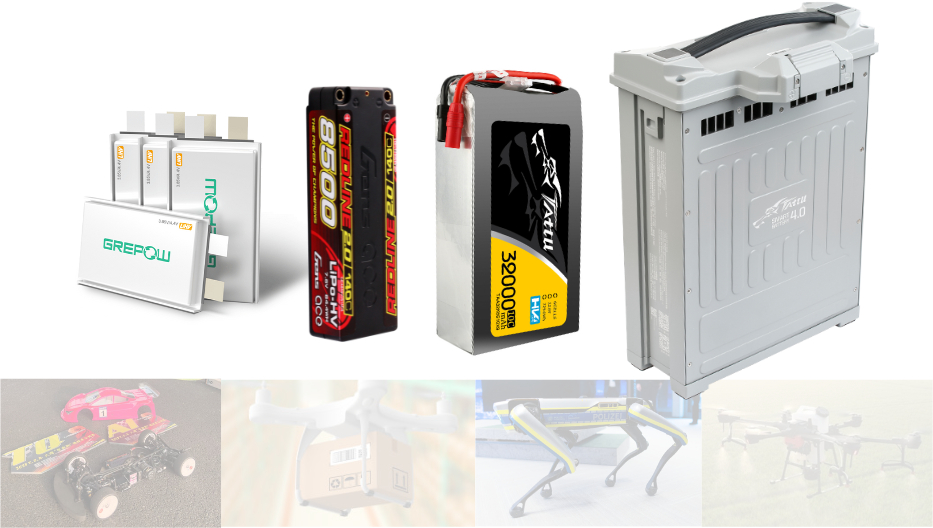
High Voltage Batteries: Basics & Applications Guide
2025-02-28 -

How Drone Light Shows Are Created and Key Battery Power Requirements
2024-10-21 -

eVTOL Battery vs EV Battery: What’s the Difference?
2024-08-21
Related products
-
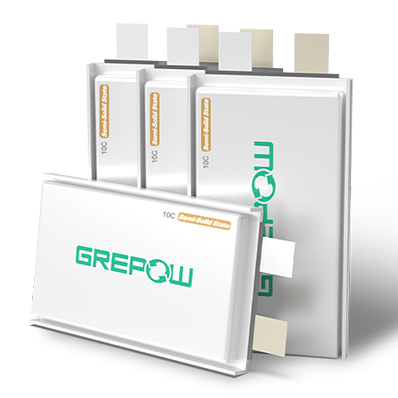
10C Semi-Solid State High Energy Density Battery
-
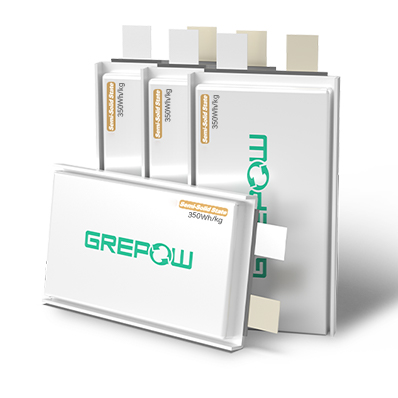
5C High Energy Density Semi-Solid State Battery
-
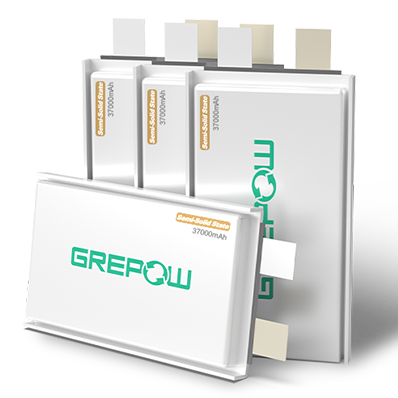
37000mAh Semi-Solid State High Energy Density Battery
















































